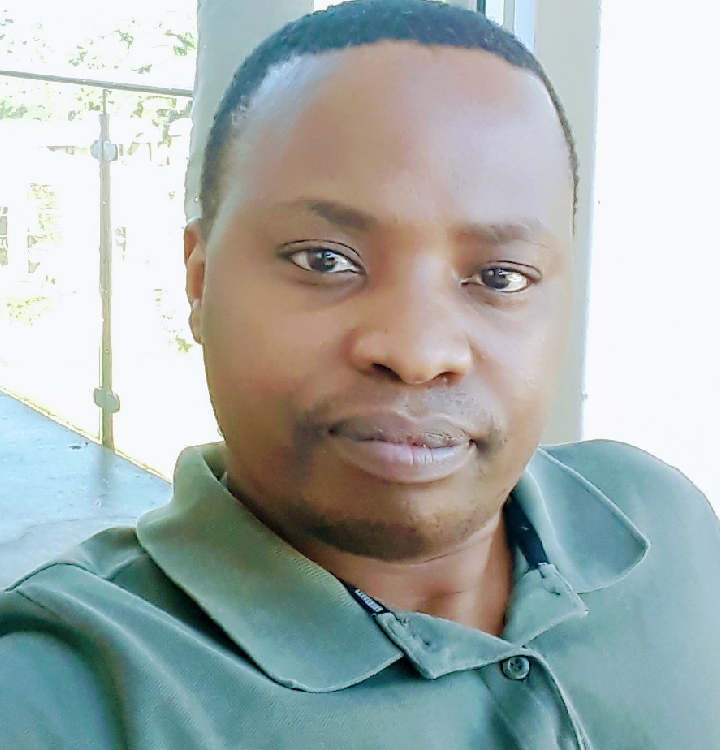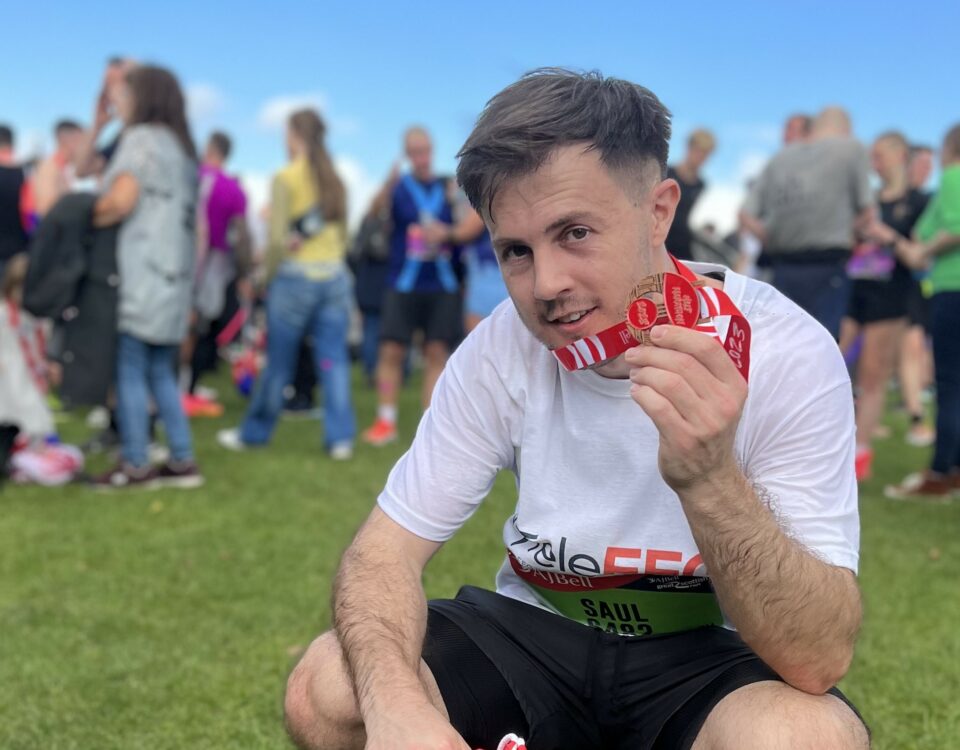This website uses cookies so that we can provide you with the best user experience possible. Cookie information is stored in your browser and performs functions such as recognising you when you return to our website and helping our team to understand which sections of the website you find most interesting and useful.
TeleEEG® in the Dominican Republic
TeleEEG® in the Dominican Republic
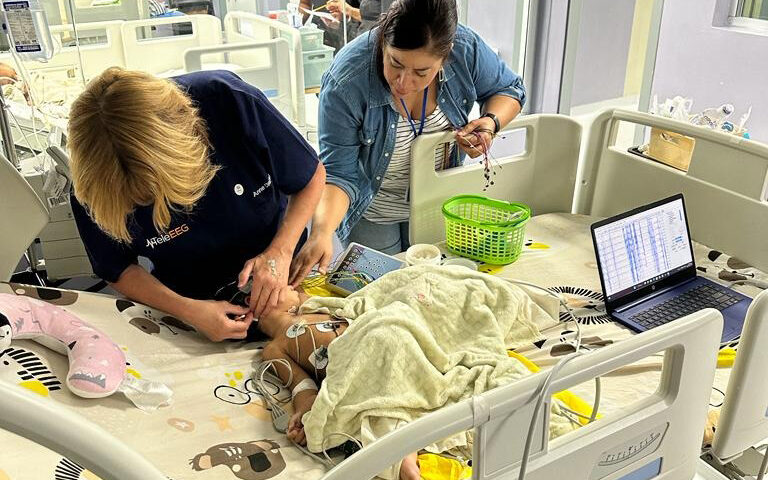
Epilepsy Diagnosis by Telemedicine for the Developing World
Regional Children’s University Hospital Dr Arturo Grullon, Hospital Infantil Regional Universitario Dr Arturo Grullon (HRIAG), in Dominican Republic receives innovative epilepsy service as global charitable partners come together in Santiago.
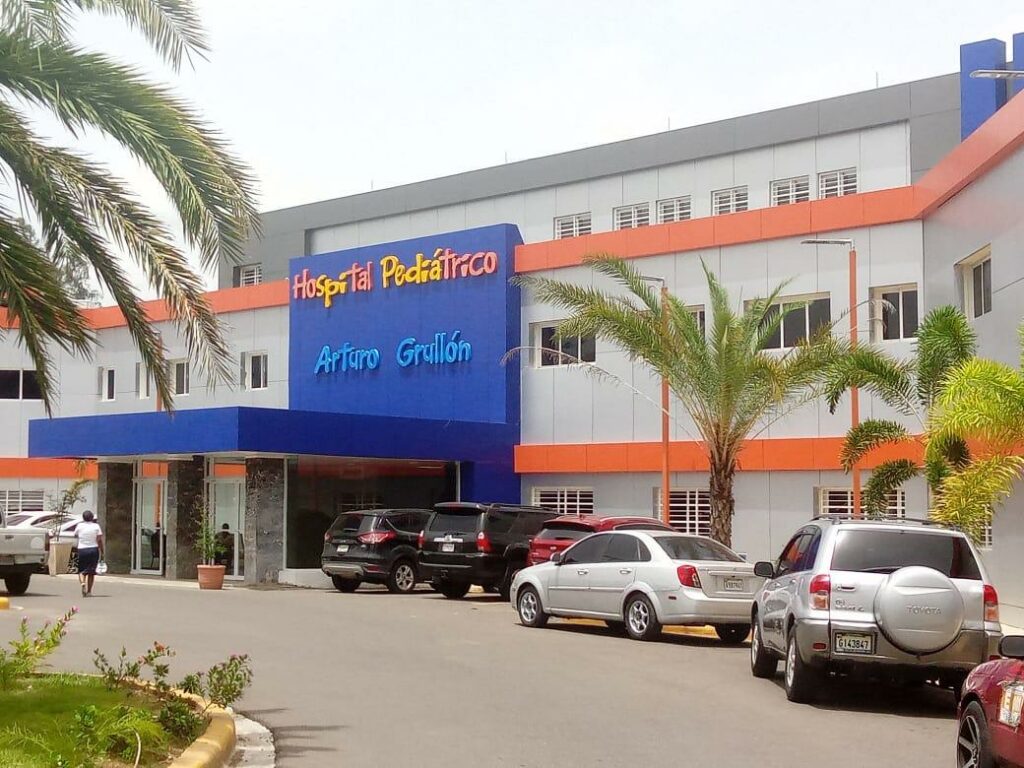
Each project needs a driving force and in this case the request for help reached TeleEEG via Associate Professor Pediatrics, Neurology and Epilepsy (University of Texas Southwestern, Dallas, TX, USA) Andrea Lowden, MD. Dr. Lowden was initially introduced to TeleEEG at the 2020 AGM of the American Clinical Neurophysiology Society (ACNS) by then President Suzette LaRoche, MD.
Dr. LaRoche and Dr. Lowden had previously undertaken medical and educational missions to Latin America together and were keen to support a more lasting provision by bringing UK charity TeleEEG for the benefit of those most in need of help with epilepsy diagnosis.
At the time of the submission request to TeleEEG Dr. Lowden explained, “There was previously no availability for EEGs in the public children’s hospital in Santiago, the second largest city in the country. The HRIAG serves pediatric patients that are uninsured or that are under government insurance”.
Dr. Lowden played a key role during the trip and received TeleEEG training alongside local chief of the pediatric neurology department Patricia Pena, MD, EEG technician Rose Mary Rodríguez Lebrón and Child Neurologists from HRIAG Máximo Villar, MD and Joami Noboa Rodriguez, MD. Intermittently during the 2 day training Dr. Yenny Almonte de Ramos, MD (Child Neurologist) and Dr. Criselyes Alcantara (Pediatric Intensivist and Subdirector of the HRIAG) were also present. Dr. Alcantara in her role as the subdirector of the HRIAG officially received the donation of the EEG machine.
On March 29th Dr. Steve Coates and Anne Clarke of TeleEEG arrived in Santiago. Dr. Lowden had arrived the day prior in order to provide an educational lecture to the child neurologist, pediatric residents, medical students and other medical staff. This lecture took place on March 29th at the HRIAG. The topic was ‘Basic Principles in Epilepsy’ where an overview of the prevalence, definition, classification, treatment and diagnostic modalities along with myths in epilepsy were discussed. During the lecture Dr. Manuel Lora Perello who is the director of the National Service of Health of the Northcentral Region in Dom. Rep. came to visit and gave a welcoming speech of appreciation to Dr. Lowden for her commitment to education and creating awareness in Dom. Rep. He also appreciated the generous donation from TeleEEG of the EEG machine, their time and efforts training the medical staff in the use of the equipment and ongoing future efforts in bridging the gap in diagnosis and treatment in epilepsy.
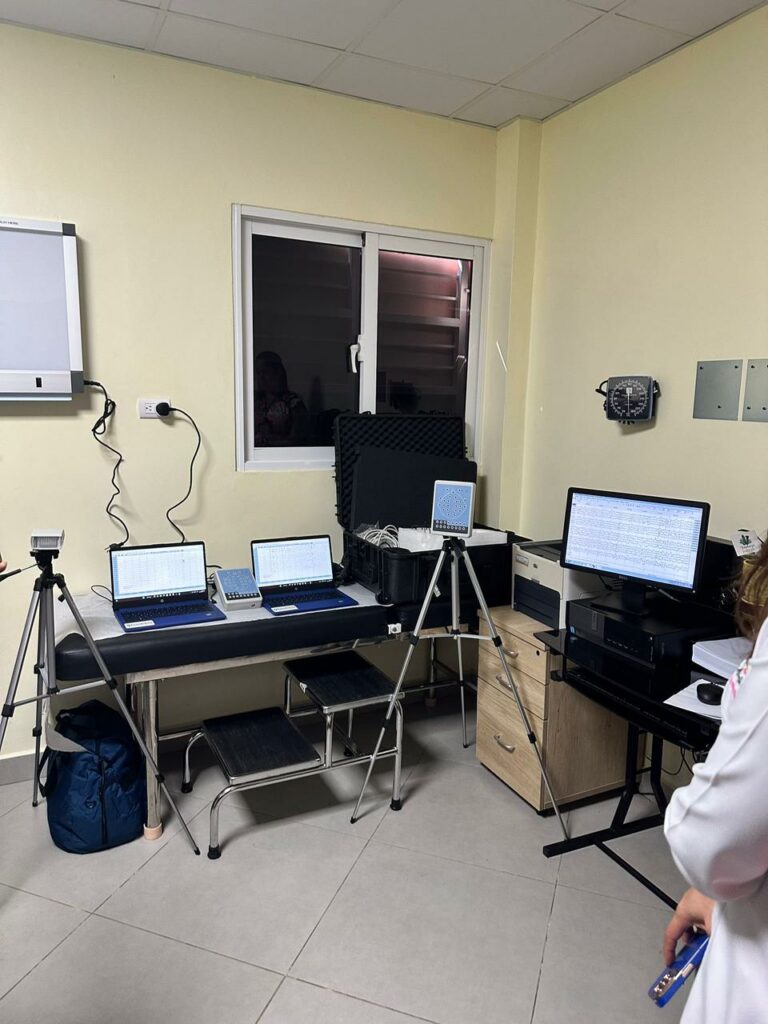
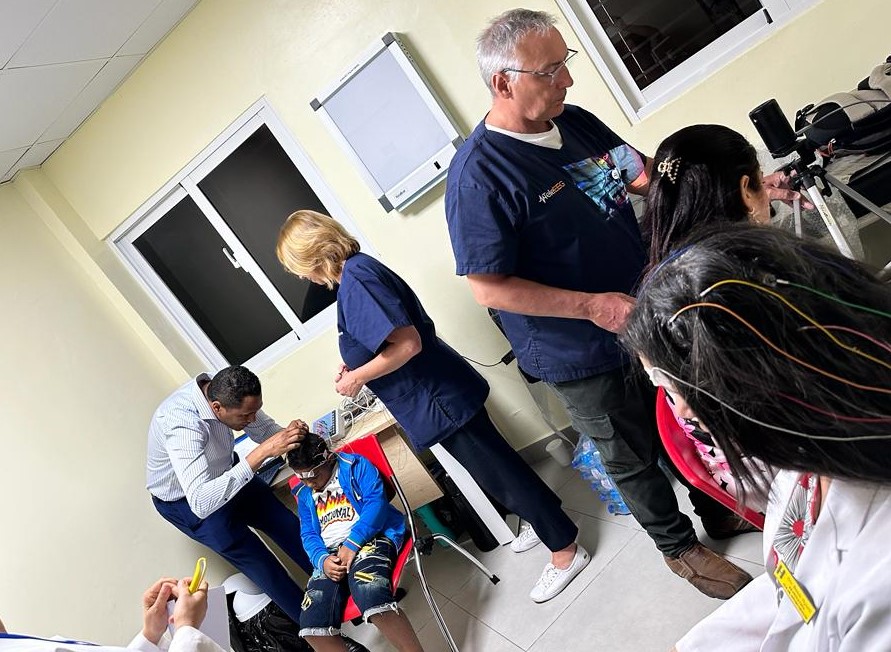
On March 30th the day started with a welcoming ceremony at the conference room of the HRIAG where the Club Rotary Santiago Center led by the 2022-2023 President of the Rotary Club in Santiago, Dominican Republic, Dinora Borelly, warmly welcomed everyone, kindly providing commemorative plaques of appreciation and recognition to the lead medical team members. The day culminated in a wonderful evening reception of thanks and support, most importantly helping raise awareness of the plight of all those world-wide suffering undiagnosed in the epilepsy treatment gap.
During the day of March 30th and March 31st of 2023 Dr. Coates and Anne Clarke installed and set-up the device and provided an intensive training to the local child neurology team and EEG technologist at the HRIAG. In 2022 the HRIAG had received a donation of an EEG machine. This device was in need of some technical support to optimize its use. Dr. Coates and Anne Clark also helped with trouble shooting the device.


A ground-breaking moment was to assign the newly donated device by TeleEEG also as a portable device, which would provide EEG services to those patients that cannot be transported to the EEG unit of the hospital.
On March 31st for the first time an EEG was completed on a pediatric critical care (ICU) patient. Using the newly donated portable machine by TeleEEG the study was completed by Anne Clarke and EEG local technician Rose Mary Rodriguez. Dr. Lowden and Dr. Pena were also present. This service will be revolutionary and essential for the pediatric patients at HRIAG needing an urgent EEG done in the ICU. Previously HRIAG did not have the capability to provide this service free of charge for patients.


It costs around $8,000 to cover the basic costs of enabling a hospital clinic with an EEG machine, in-person training for 3+ healthcare staff and ongoing remote support technologies. This is covered by fundraising donations. The costs for the Santiago hospital TeleEEG clinic were kindly gifted by a philanthropic donor via the ROW Foundation, based in Western Chicago, USA, as well as support for travel having been received from the prestigious British Medical Association (BMA).
All EEG interpretation, diagnosis and reporting is provided to clinics at zero costby TeleEEG’s virtual global team of volunteer consultant clinical neurophysiologists, neurologists, paediatricians and technologists who provide peer-to-peer advisory diagnostic services free of charge 24/7 to hospitals, clinics and patients-in-need around the world in developing countries.
Dr. Lowden has been fundraising for supplies including electrodes, conductive paste, skin preparation, surgical tape, gauze, hyperventilation pinwheels, toys, etc. These items were gathered from generous donators including the Neurophysiology lab at Children’s Health Dallas where Dr. Lowden practices, as well as Weaver & Company who has committed to provide Ten20 and Nuprep for the upcoming year. The Rotary Club of Santiago Centro has been supporting Dr. Lowden’s efforts obtaining these items.

It is estimated that 65 million people worldwide live with epilepsy. Of these it is estimated that 70-80% currently live in the epilepsy treatment gap in low to middle income countries, recognised as a major public health concern by the World Health Organization (WHO).
Compounded by a global shortage of experienced neurophysiology specialists, epilepsy requires clinical diagnosis, this can be expedited via supporting Electroencephalogram (EEG).
For anyone wishing to volunteer, make a donation, gift equipment or apply for a clinic please visit www.teleeeg.org/donate/


